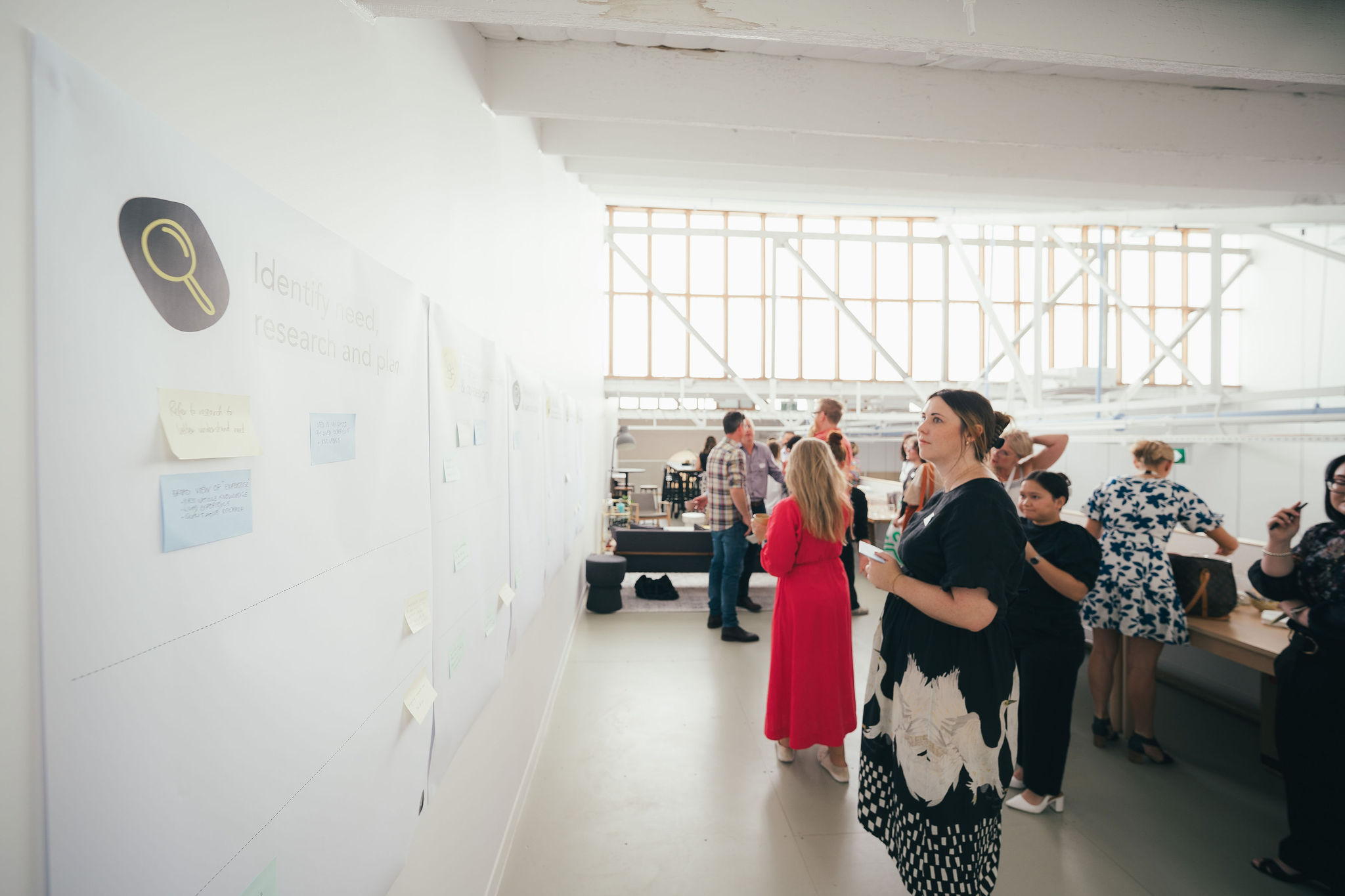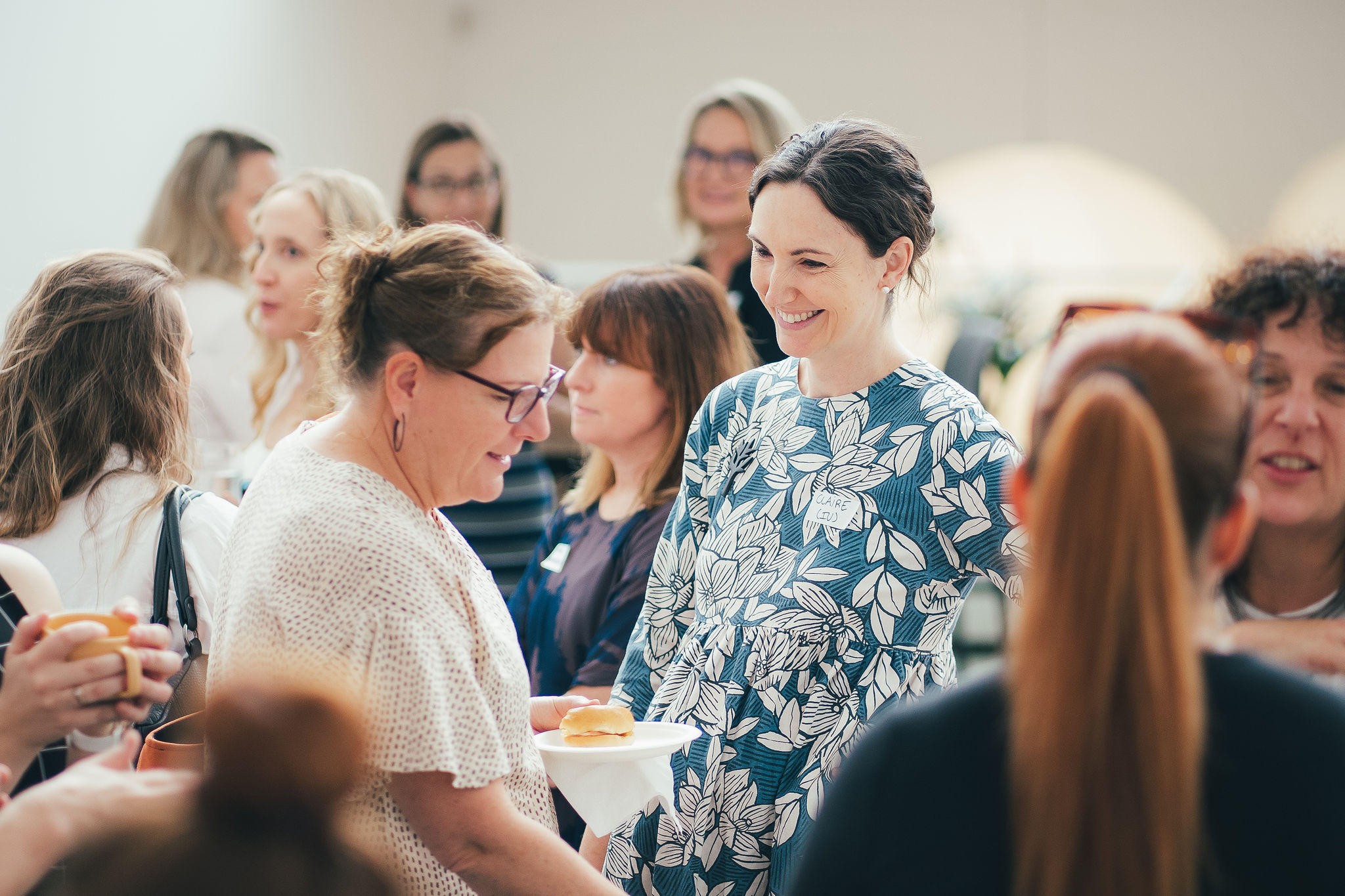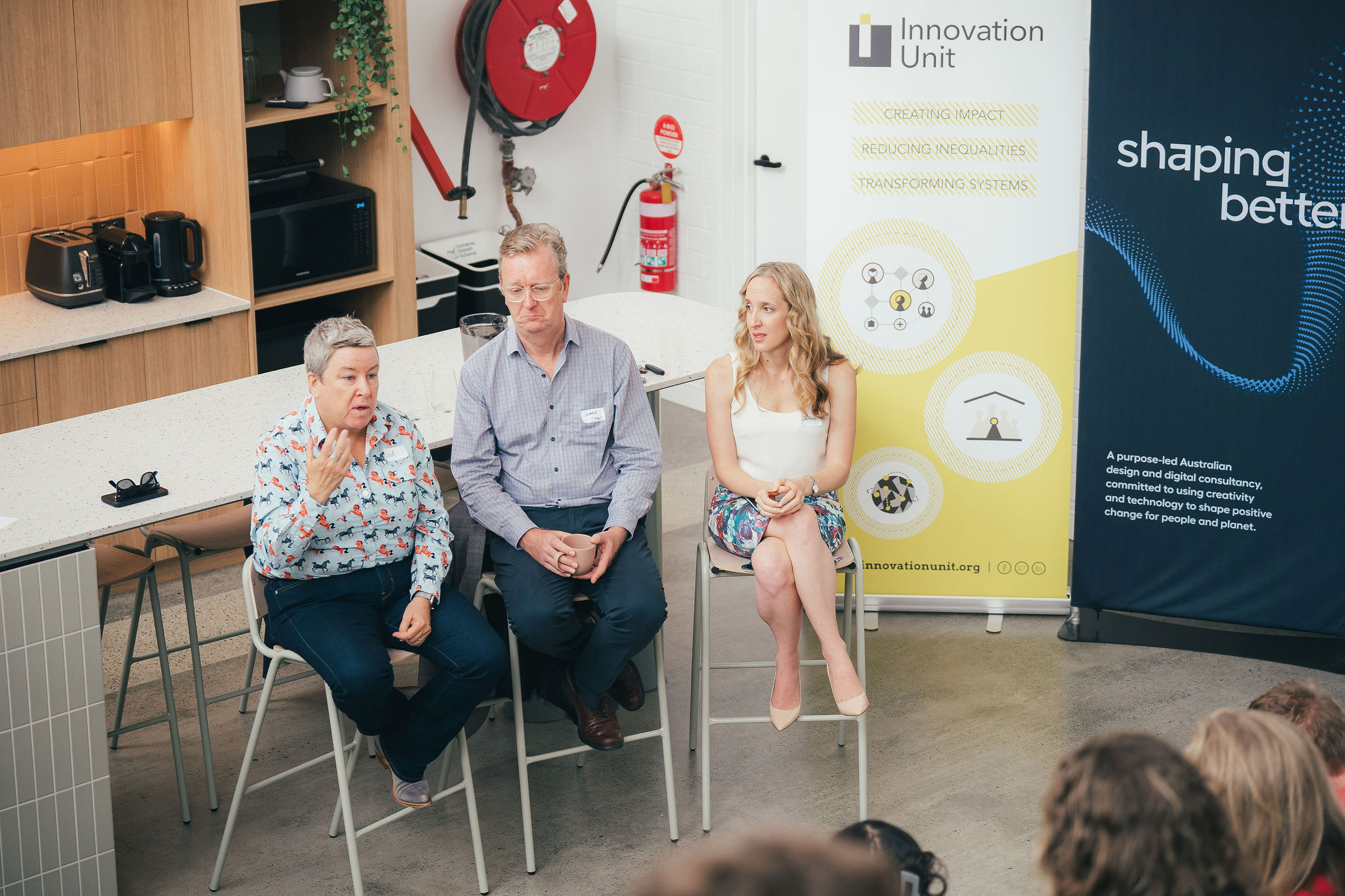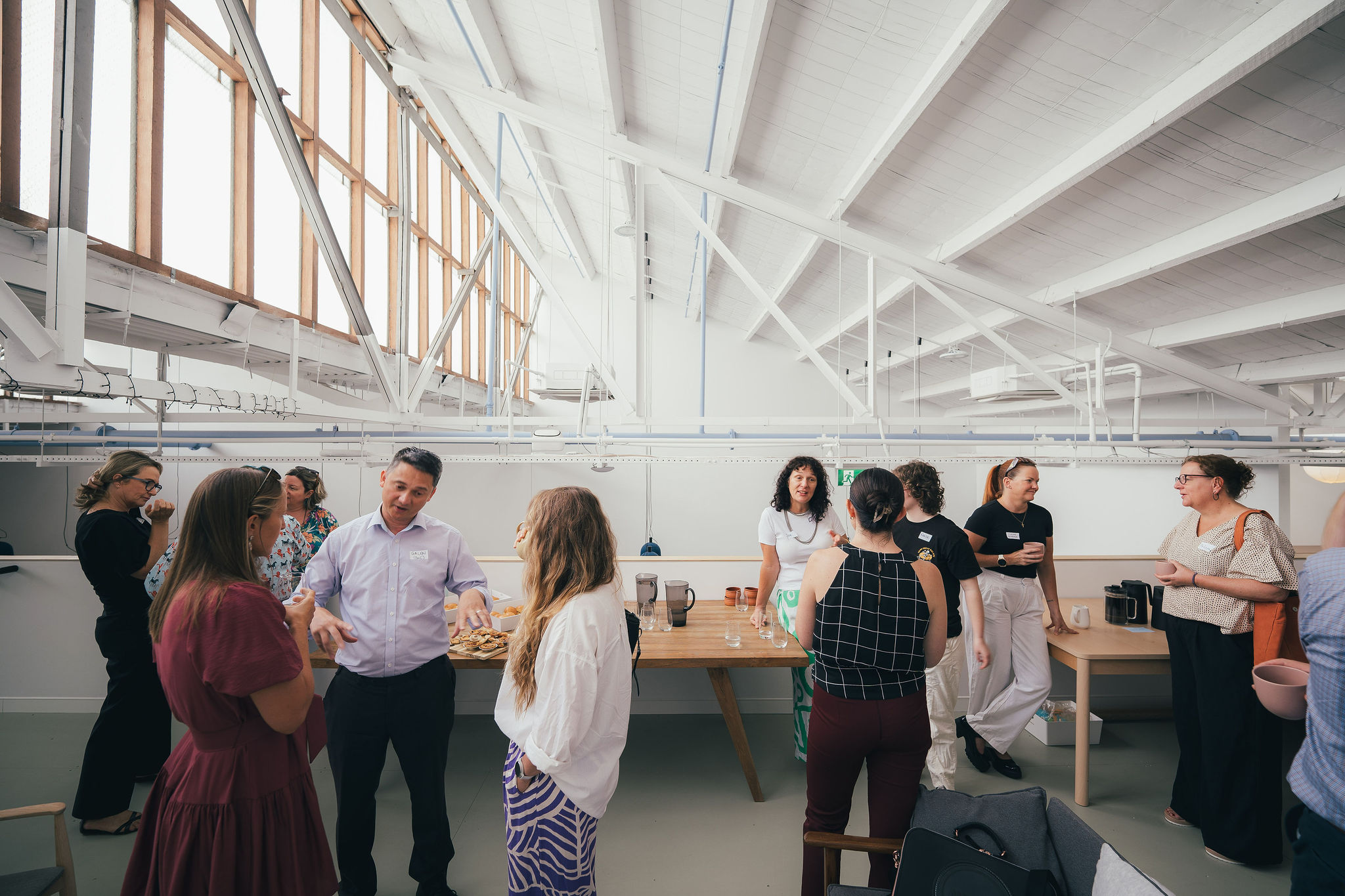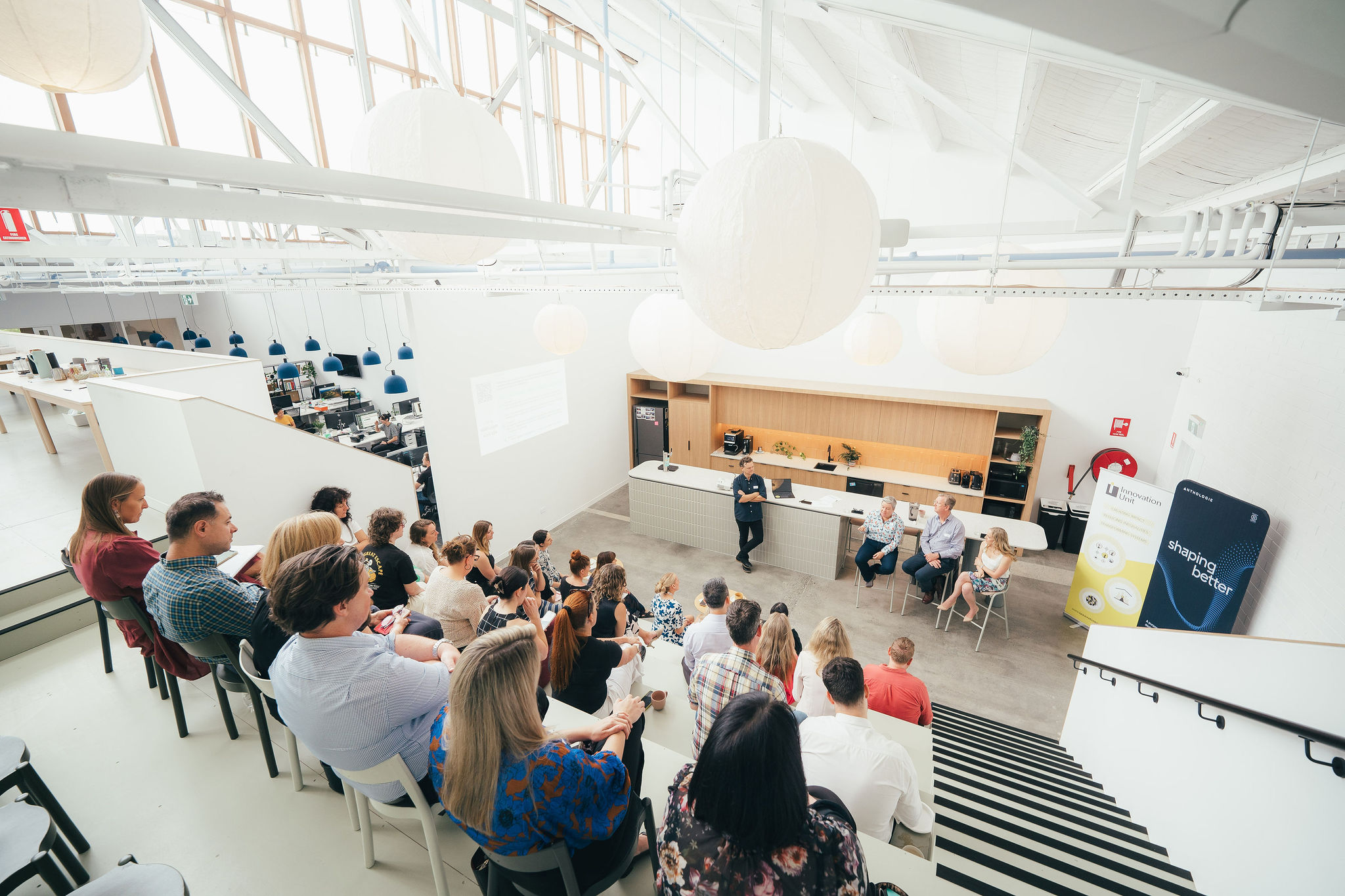
Commissioning Innovation
blog | Words Matt Berry | 21 Mar 2024
On an already-warm February morning around 7am in East Perth, our guests started to trickle in from the street. Innovation Unit and Anthologie were hosting ‘Commissioning Innovation’, a panel event exploring how we can design and manage the procurement, funding, and contracting of innovative approaches in ways that help us get better outcomes for people and communities. After some lively mingling and chatter (people get more excited about commissioning than we expected!), we heard from Jodi Cant (Director General, Department of Finance), Charlie Gunningham (Director Innovation, Department of Jobs, Tourism, Science and Innovation), and Jenna Palumbo (Executive Director of Effective Philanthropy, Minderoo Foundation), followed by a great discussion with an audience full of funders, innovators, service providers and more.
This blog captures three of the biggest themes we heard at the event, and offers up some questions we think are worth exploring as we think about how to commission innovation better.
Where does commissioning come from?
Our first theme is about the drivers that set commissioning in motion. Commissioning of services (particularly in government) is often driven by contract expiry dates or reactive requests, but our speakers and audience talked about the opportunity for a more proactive approach to improving service quality and outcomes. The status quo is oriented towards continuity or incremental reform – a new tender will go out, mostly the same organisations will win contracts, and mostly the same kind of services will keep being delivered. When we approach the commissioning cycle this way, we miss valuable opportunities for innovation and impact.
Those in the room at our event called for a more proactive, strategic approach to commissioning that creates space for innovation. Commissioning processes, we heard, should seek out and be driven by a range of important inputs, including:
- Learning and insights from work that’s already underway, including evaluations of previously funded services and activities, as well as learning from promising prototypes or experiments that are seed-funded by less obvious sources of funding (e.g., organisations’ own internal funds, or philanthropic grants)
- The latest data and research on both the challenges services hope to address, and best and emerging practice in response to those challenges
- Community demand, including the future aspirations of people and communities affected by relevant challenges, and how they do or don’t want to receive support
- Big-picture strategies which set out long-term visions and principles for work in relevant areas, especially where those strategies have been developed with participation from people and communities and with an eye on how multiple sectors and strategies intersect.
Our big questions relating to this theme:
- How could learning from community-driven prototypes and experiments be connected up with commissioning processes, so the most promising innovations might have the chance of having an impact at scale?
- How might people and communities most impacted by services play a leading and ongoing role in the design of visions and strategies that guide commissioning, rather than just participating passively in one-off consultations?
- How might a broader spectrum of data and expertise – including First Nations knowledge, lived experience, and both qualitative and quantitative data – be valued and drawn upon ethically and meaningfully in the process of research and identifying need?
Clear on direction, flexible on approach
Our second theme is about how to resolve a tension in the commissioning space between clarity, stability, and accessibility on the one hand, and flexibility, responsiveness, and self-determination on the other. We heard a clear story about how important it is for any commissioning process to provide clear and accessible information to service providers, particularly as a way to level the playing field for smaller providers. Those who don’t have the capacity to do extensive research and co-design work ahead of grant applications or tender submissions benefit greatly from commissioners setting out clear expectations, and even providing data sets and other information to support all applicants. What’s more, commissioners communicating clear intentions sends signals to the market which enable funders to ‘crowd in’ further investment, unlock multiple types of capital, and multiply the impact of a given investment.
We also heard, however, that too much clarity becomes a problem when commissioners become too prescriptive about what their funds will support. Overly directive commissioning stifles innovation by limiting experimentation with new practices or adaptation of an approach to the needs of a specific place or community. It can also limit service providers’ ability to innovate down the track as they encounter challenges in service implementation or shocks like pandemics or climate events; inflexible contracts and requirements restrict the kind of agile responses these kinds of circumstances demand.
A promising way to resolve this tension that started to emerge from our conversations goes something like ‘tight on outcomes, loose on approach’. This strategy would see funders and commissioners bringing clarity and rigour to the outcomes that services should help to create for people and communities, while being open to the many unique and innovative approaches that service providers might take to achieving those outcomes in their particular context. We also heard that flexibility and agility should be built into contracts and agreements from the outset, allowing services to adapt to new learning or circumstances. A ‘tight on outcomes, loose on approach’ mentality might help us achieve the best of both worlds in commissioning: enough clarity to level the playing field and set the direction of change, but enough flexibility to allow for innovation.
Our big questions relating to this theme:
- What kinds of terms and conditions could be built into contracts that set up services or projects for greater flexibility to respond to changing needs and for the potential for innovation – not just at the outset, but years into the future?
- What would it take for outcomes to be authentically co-designed with the community while also ensuring they bring clarity and rigour?
- What could a commissioning process look like where applications or responses are designed to be very simple, low-barrier and flexible? How could commissioners support applicants at the proposal stage, with resources and capability to conduct feasibility studies and research, carry out service design or form partnerships to benefit community outcomes?
Infrastructure for collaboration & scale
Our third theme is about how innovation commissioning can enable more coordinated approaches to tackling our biggest challenges. Panellists and audience members shared that our current funding and commissioning ecosystem can feel disjointed and its processes impersonal, which can in turn lead to disjointed and impersonal service delivery. We noticed as people shared their perspectives that siloes and disconnection have created a system which nobody is very happy with, but which nobody feels like they have the power and agency to fix.
One particular challenge raised was a gap in the funding ecosystem between support for higher-risk, leading edge research and prototyping of innovative new practices and approaches (of the kind philanthropy, foundations, and grant funders might provide) and the larger, more long-term capital needed for implementation, scale, and sustainability (often provided by government). We heard stories of promising innovations that had been tested and proven, but which were struggling to access the funding needed to bring the solution to a scale where it can really make an impact for people and communities.
The solution called for here was not for another funder to bridge the gap, adding another node to an already disconnected system – but rather, to find ways of commissioning innovation that connect up the nodes that already exist into a coherent funding ecosystem. We need more articulated pathways for innovators, so that impactful new approaches can find their way to making and impact sooner. We need more sharing of data and learning between commissioners and service providers, to support collective innovation efforts in service of better outcomes. And we need more and better conversations between commissioners, service providers, innovators, and the people and communities we hope to serve, to build stronger relationships and to make space for us to think together about the kind of futures we want to innovate towards, and the kind of funding and support that will be needed along the way.
Our big questions relating to this theme:
- How can we create and communicate clear articulated pathways for people and organisations developing innovative new services and approaches, so that they know where to go for support at each stage from ideation to scale?
- How can we set up more inclusive and productive spaces for conversations between all of the stakeholders in innovation commissioning, to allow for better relationship-building, sharing, learning, visioning, and decision-making?
Speaking of more and better conversations between commissioners… we continue to find a lot of value in convening these conversations for people involved and interested in commissioning innovation, and we heard from our audience that they found value in it too. There’s already talk about our next event and about who should be in the room – so please get in touch to let us know what you’d like our next conversation to cover, or if there are any speakers you’d like to request!
A huge shout-out to Anthologie for partnering with us on this event and hosting us in their lovely Brown Street studio, and thank you again to our excellent panellists. If you’d like to get in touch, you can reach out at matt.berry@innovationunitanz.org.
